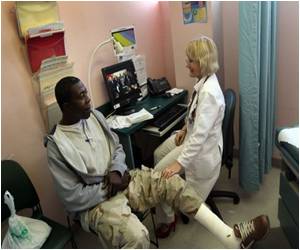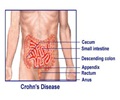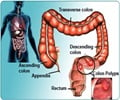For removing precancerous polyps during colonoscopies, a surgical method combining two techniques can substantially reduce the recovery time and the length of hospital stays, potentially saving the health-care system millions of dollars.

The typical approach to these difficult-to-remove polyps is a procedure called laparoscopic hemicolectomy (LHC), in which surgeons using a laparoscope must remove an entire section of the colon that contains the polyp. But in contrast to this invasive procedure, surgeons employing laparoscopic-assisted colonoscopy with polypectomy (LACP) use both a laparoscope and an endoscope to isolate and remove just the polyp.
In addition to shorter discharge time (four days vs. two and a half days), researchers found that operating time for patients undergoing LACP was significantly shorter than patients undergoing LHC (95 minutes vs. 179 minutes). LACP patients also had far less estimated blood loss (13 ml vs. 63 ml) and required less IV fluid (2.1 liters vs. 3.1 liters). After surgery, LACP patients were able to resume eating solids foods in less than two days, while LHC patients had to wait nearly four days. Researchers found the two procedures were equivalent in terms of overall efficacy and complications.
Because this study involved 28 patients, Dr. Buscaglia and his team plan to conduct a larger, multi-center investigation to confirm these findings. The researchers also hope to compare LACP versus LHC on removal of polyps in the left colon since this study looked exclusively at right-side colonic polyp removal.
"About 25 percent of patients undergoing colonoscopy require polyp removal, and a significant proportion of these patients have large polyps that cannot be easily removed by standard advanced endoscopic techniques," said Dr. Buscaglia. "These findings suggest that we may need to tailor our surgical approach to ensure every patient receives the best care possible, regardless of polyp removal difficulty."
Dr. Jonathan Buscaglia will present data from the study "Laparoscopic-assisted colonoscopy with polypectomy versus laparoscopic hemicolectomy for endoscopically unresectable right-sided colon polyps: results of a randomized controlled trial," abstract 611, on May 5, at 8 a.m. CT, in room S404 of McCormick Place.
 MEDINDIA
MEDINDIA




 Email
Email










